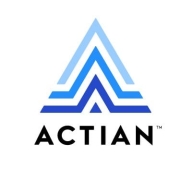

Teradata and Actian Ingres both compete in the database management solutions category. Teradata often has the upper hand in scalability and analytics, making it ideal for large enterprises, while Actian Ingres is favored for its cost-effectiveness and ease of integration.
Features:Teradata offers advanced analytics, robust scalability, and integration capabilities suited for enterprises with complex data needs. Actian Ingres stands out with simplicity, cost efficiency, and flexible deployment, serving businesses with varied environments.
Ease of Deployment and Customer Service:Teradata involves a complex deployment process requiring specialized expertise, along with reliable customer support for big enterprises. Actian Ingres allows for faster, simpler deployment, being advantageous for smaller teams, while still providing effective service.
Pricing and ROI:Teradata has higher setup costs, delivering substantial ROI for entities needing high data processing power. Actian Ingres involves a lower initial investment, offering strong ROI for those valuing cost-effectiveness. The decision often depends on weighing the higher price against returns based on needs and budgets.
| Product | Market Share (%) |
|---|---|
| Teradata | 12.1% |
| Actian Ingres | 1.4% |
| Other | 86.5% |

| Company Size | Count |
|---|---|
| Small Business | 26 |
| Midsize Enterprise | 12 |
| Large Enterprise | 49 |
Actian’s Ingres is a leading, enterprise-grade database management system designed to reduce IT costs and time-to-value, while delivering the strength and features expected from an enterprise-class database. Ingres 10.2 is the latest version of the database, containing enhancements that will make it easier to internationalize customer applications. Along with improved performance and reduced configuration overhead, users can take their first steps into big data analytics with the new Window functions.
Teradata is a powerful tool for handling substantial data volumes with its parallel processing architecture, supporting both cloud and on-premise environments efficiently. It offers impressive capabilities for fast query processing, data integration, and real-time reporting, making it suitable for diverse industrial applications.
Known for its robust parallel processing capabilities, Teradata effectively manages large datasets and provides adaptable deployment across cloud and on-premise setups. It enhances performance and scalability with features like advanced query tuning, workload management, and strong security. Users appreciate its ease of use and automation features which support real-time data reporting. The optimizer and intelligent partitioning help improve query speed and efficiency, while multi-temperature data management optimizes data handling.
What are the key features of Teradata?In the finance, retail, and government sectors, Teradata is employed for data warehousing, business intelligence, and analytical processing. It handles vast datasets for activities like customer behavior modeling and enterprise data integration. Supporting efficient reporting and analytics, Teradata enhances data storage and processing, whether deployed on-premise or on cloud platforms.
We monitor all Data Warehouse reviews to prevent fraudulent reviews and keep review quality high. We do not post reviews by company employees or direct competitors. We validate each review for authenticity via cross-reference with LinkedIn, and personal follow-up with the reviewer when necessary.